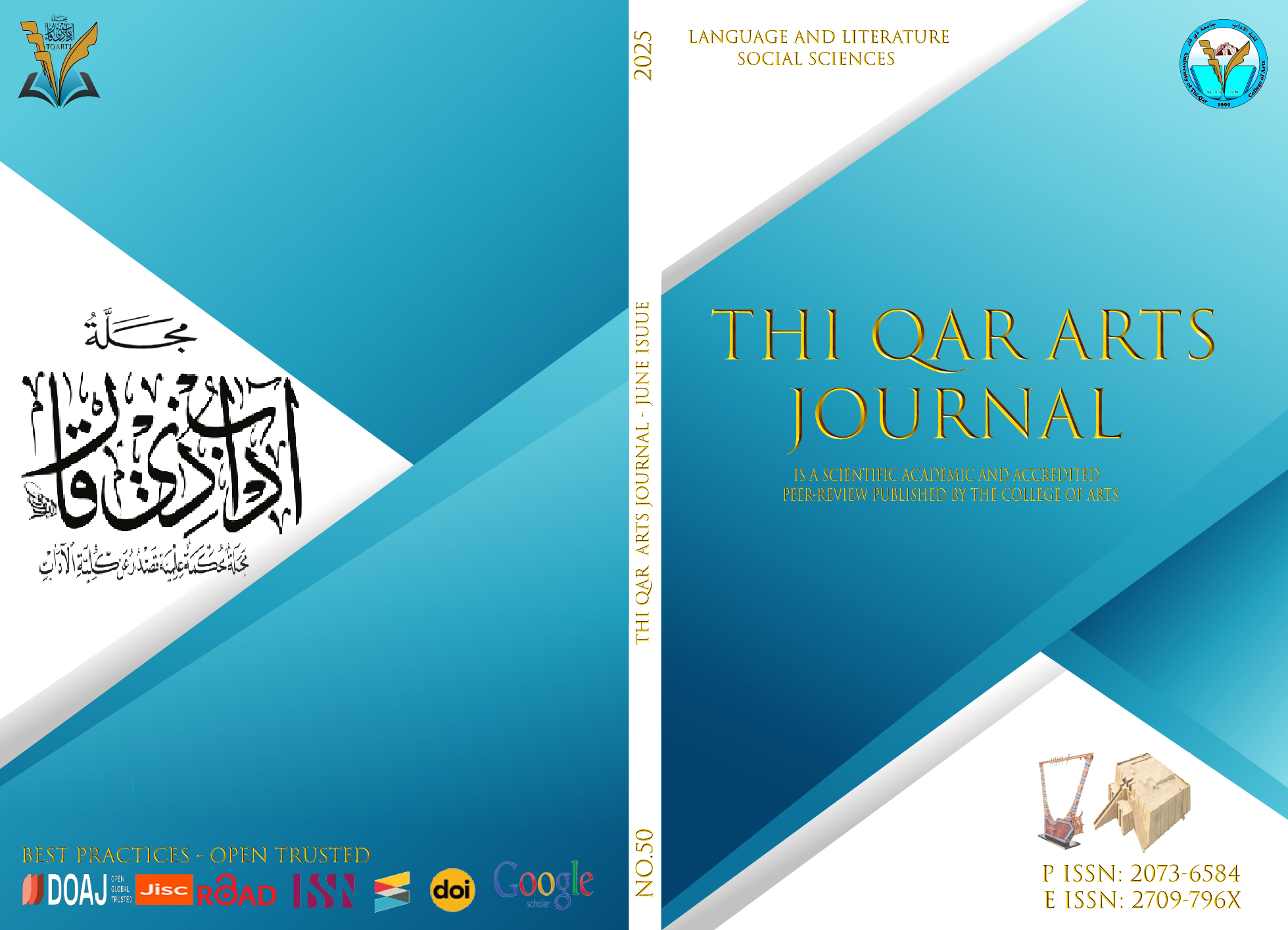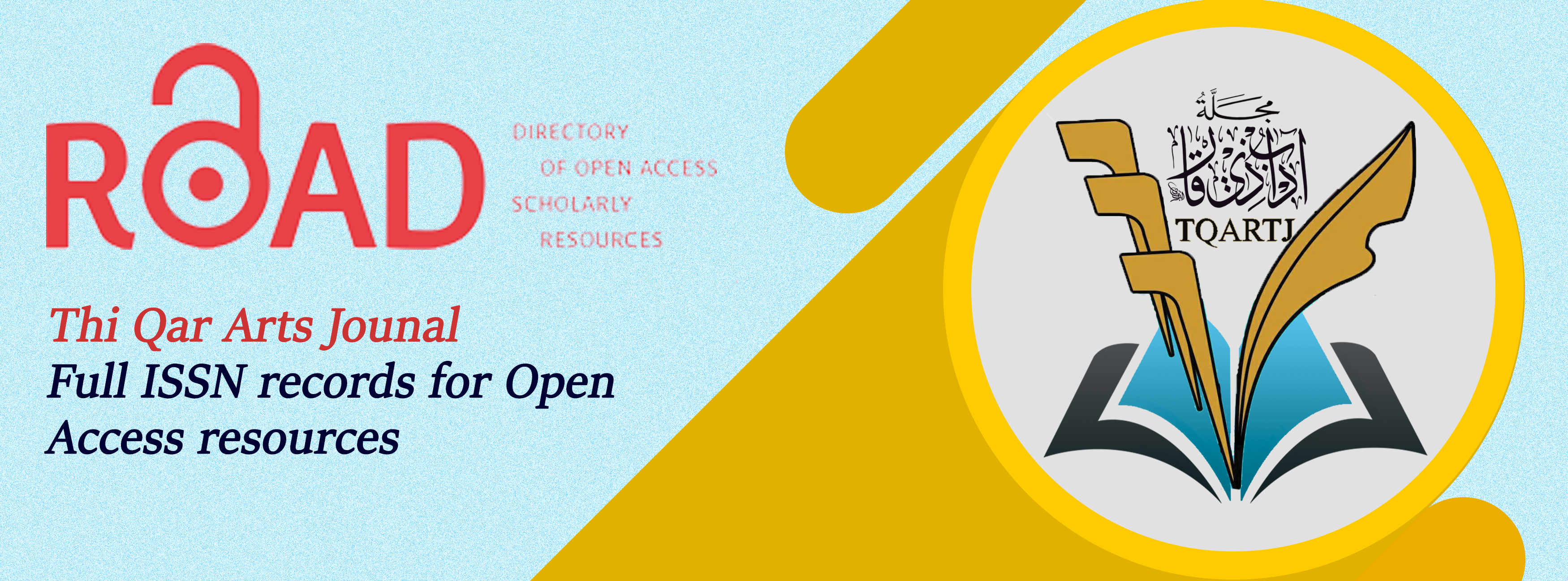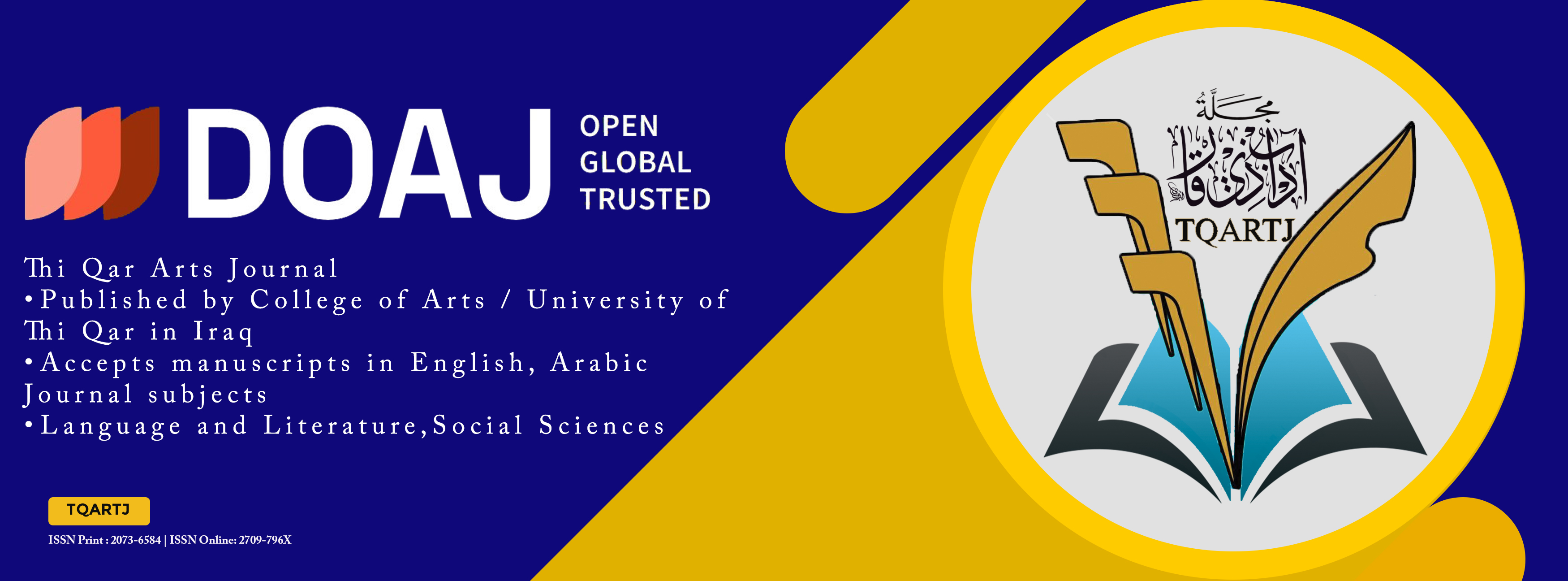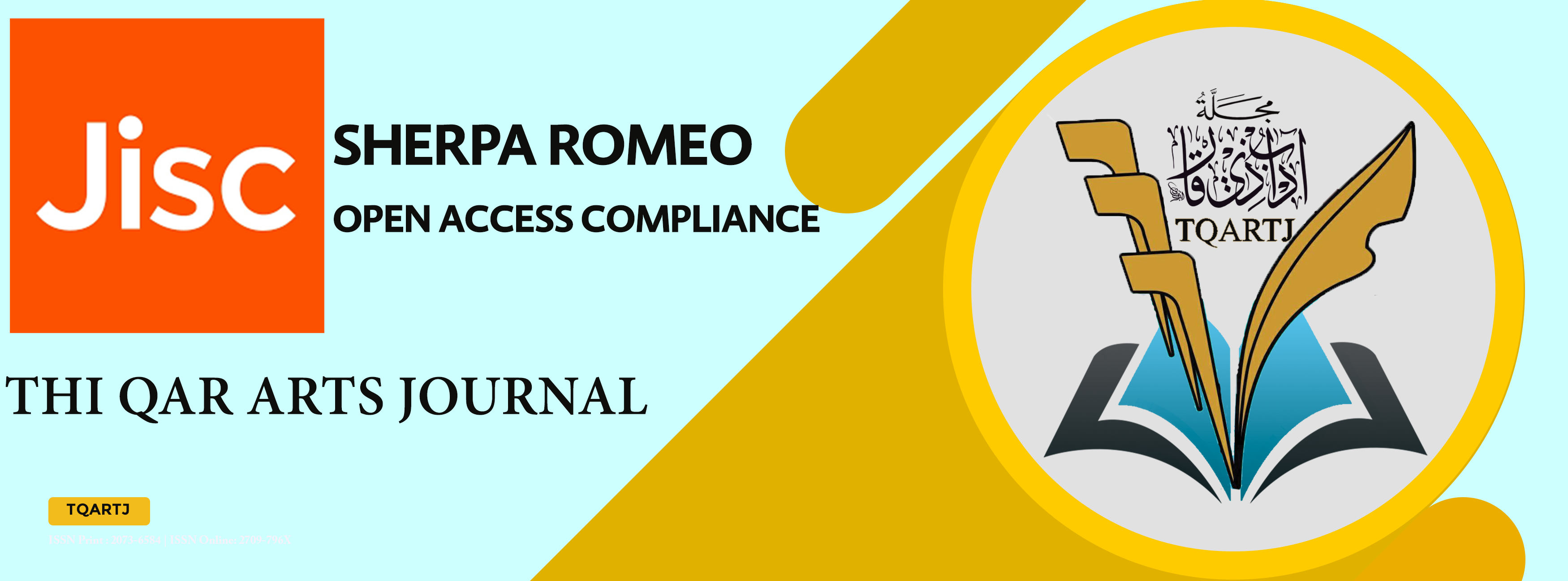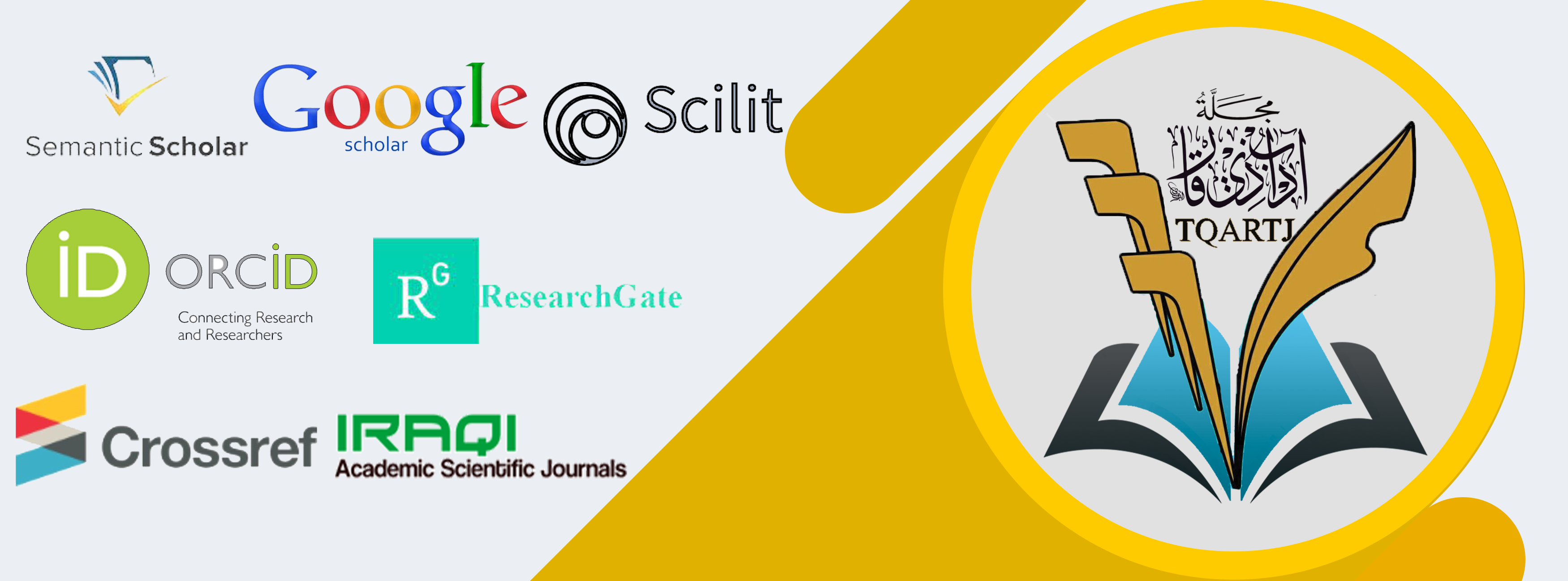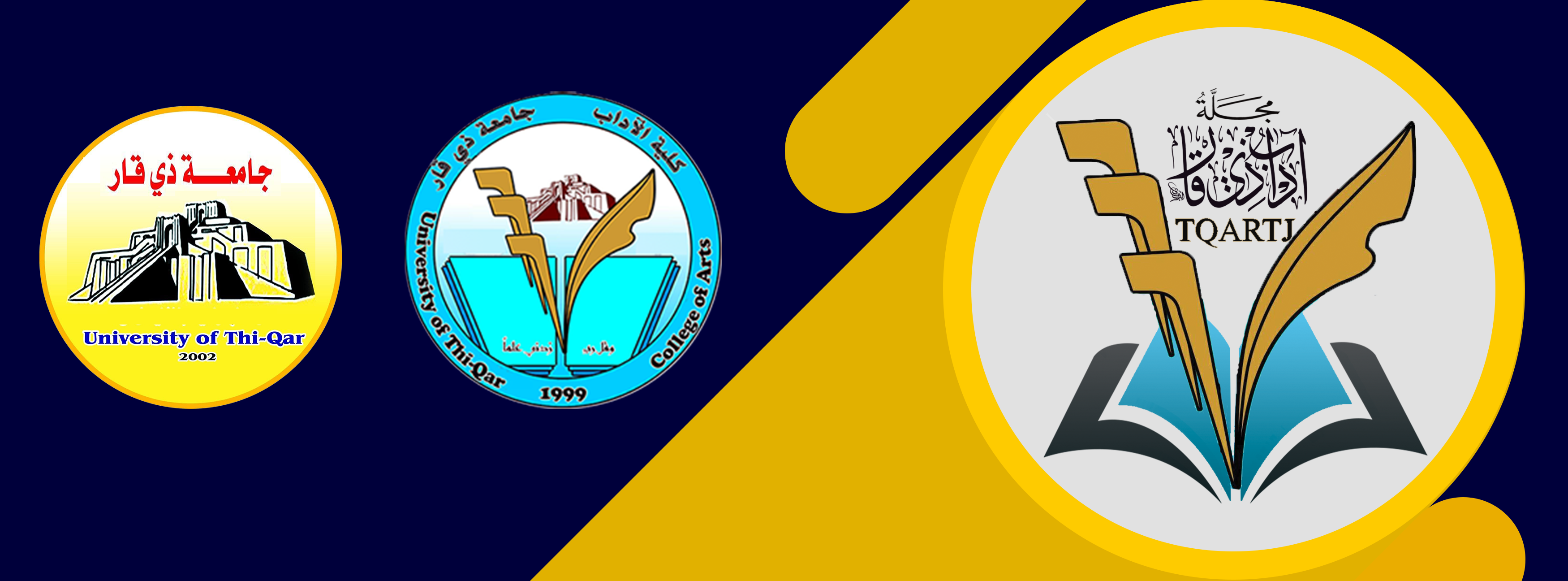Signs of Psychological Emotions in the Poetry of Abdullah bin Al-Haddad Al-Andalusi
DOI:
https://doi.org/10.32792/tqartj.v4i50.787Keywords:
Psychological emotions, the descriptive approach, the semiotic approach, poetic production, emotional reaction.Abstract
This research attempts to capture some aspects of the psychological emotions of the poet Abdullah bin Al-Haddad Al-Andalusi. Throughout his poetic journey, the poet experienced many events and incidents that left their mark on his poetic creations. Therefore, the nature of this research necessitated following the descriptive-analytical approach, where theories are examined and described, and the poetic verses are analyzed according to the semiotic method. Since poetry is the result of psychological emotions such as love, smiling, complaining, sadness, and other emotions that work within the creative self and motivate poetic production, the research is an attempt to penetrate the poetic text through the psychological and emotional content of the speaker.
At the beginning of the research, we will explain the meaning of semiotic signs and their relationship in guiding the listener to the speaker's purpose or the emotional state within the speaker. Psychological emotions directed vary according to the psychological nature and goals of the interlocutor within the text first, and the nature of the external environment interacting with it second.
Downloads
References
1. Linguistic Analysis at the Oxford School, Salah Ismail Abdel Khaleq, Dar Al-Tanweer for Printing, 1st edition, Beirut, Lebanon, 1993.
2. Pragmatics: Purposes and Etiquette, Sabri Ibrahim Al-Sayed, Al-Adab Library, 1st edition, Cairo, 2019.
3. Psychological Interpretation of Literature, Ezzedine Ismail, Ghareeb Library, 4th edition, Cairo, Egypt.
4. Aspects of the Psychological Approach to Models of Pre-Islamic Poetry, Ali Muhammad Mustafa Asha, Journal of the Arab Universities Union for Literature, Vol. 4, Issue 1, 2007.
5. Diwan of Ibn Al-Haddad Al-Andalusi, compiled and edited by Yusuf Ali Tawil, Dar Al-Kutub Al-Ilmiyya, Beirut, 1st edition, 1990.
6. Guide to Literary Criticism, Dr. Megan Al-Ruwaili and Dr. Saad Al-Bazai, 3rd edition, Arab Cultural Center, Beirut, Lebanon.
7. Semiotics: Concepts and Applications, Saad Bin Krad, 3rd edition, Dar Al-Hiwar for Publishing and Distribution, Syria, 2012.
8. Poetic Discourse Between the Probability of Emotion and the Reality of Formation, Zerouqi Abdelkader, Journal of Signs in Criticism, Issue 71, Vol. 18, 2010.
9. The Sign: Analysis of the Concept and Its History, Umberto Eco, translated by Saeed Bin Krad, reviewed by Saeed Al-Ghanmi, 2nd edition, Arab Cultural Center, Casablanca, Morocco, 2010.
10. In Pragmatics: Performative Acts in Contemporary Arabic, Semantic Study and Contextual Dictionary, Dr. Ali Mahmoud Haji Al-Sarraf, Al-Adab Library, 1st edition, Cairo, 2010.
11. The Problem of Art, Dr. Zakaria Ibrahim, Egypt Library, Egypt Printing House, n.d.
12. Dictionary of Literary Terms: Arabic-English, Nawaf Nassar, 1st edition, Al-Mu'taz House, Jordan - Amman, 2011.
13. Al-Mu'jam Al-Wasit, Mustafa Ibrahim and others, Arabic Language Academy, Egypt, n.d.
14. The Semiotic Method: Theoretical Backgrounds and Application Mechanisms, A.J. Greimas and J. Courtes and others, translated and presented by Abdul Hamid Bouraoui, 1st edition, Dar Al-Tanweer, Algeria, 2014.
15. Theory of Emotion: A Study in Phenomenological Emotion, Jean-Paul Sartre, translated by Hashim Al-Husseini, Dar Maktabat Al-Hayat, Beirut, Lebanon, n.d.
16. Psychology of Motivation and Emotions, Dr. Muhammad Mahmoud Bani Younes, Dar Al-Maseera for Publishing, Distribution, and Printing, 1st edition, Amman, 2007.
Published
Issue
Section
License
Copyright (c) 2025 Rahab Fayadh Shanin

This work is licensed under a Creative Commons Attribution 4.0 International License.
The journal applies the license of CC BY (a Creative Commons Attribution International license). This license allows authors to keep ownership of the copyright of their papers. But this license permits any user to download, print out, extract, reuse, archive, and distribute the article, so long as appropriate credit is given to the authors and the source of the work. The license ensures that the article will be available as widely as possible and that the article can be included in any scientific archive.
